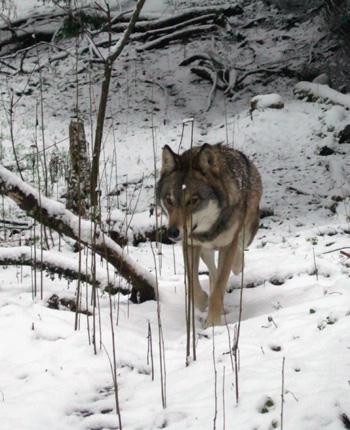Background

- Reintroduction of wild animals is a tool for biodiversity conservation (Nilsen et al. 2007, Seddon 2007). Nowadays many vertebrate species are threatened due to the high human activity. The reintroduction of endangered species can help prevent extinction. Moreover, reintroducing wild animals is not limited to endangered species; it is also a major concern to maintain top-down regulation (Terborgh et al. 1999) and sustain healthy populations with enough gene flux. Many projects of reintroduction, concerning a wide variety of species, exist all over the world.
- Most reintroductions neither prepare nor train the animals before release (Kleiman 1989), but some do. Indeed, the golden lion tamarins (Leontopithecus rosalia) were trained to improve their hunting ability and orientation skills prior to reintroduction, the red wolves (Canis rufus) were prepared for hunting (first by exposure to carcasses and then to live prey), and Swift foxes (Vulpes velox) were preadapted to wild food items (diet of road kill) (Kleiman 1989). The golden lion tamarin survival rates did not differ between the trained and untrained groups (Kleiman 1989), and providing red wolves with carcasses was more cost-effective and practical than giving live prey (Phillips et al. 2003).The amount and type of training depends above all on the species and the goal of the release (Kleiman 1989), although it is not well known which species-specific behaviour requires learning. However, evidence can help to evaluate which behaviour may require consequent or reduced learning.
- Fox (1969) reported that hand-raised canids such as coyotes (Canis latrans), red foxes (Vulpes vulpes), grey foxes (Urocyon cinereoargenteus) as well as Artic foxes (Alopex lagopus) reacted to the movement of the prey which was a stimulus for orientation, approach and chase. Even during play sessions all stationary prey were stimulated to move (Fox, 1969). Similarly, wolf predation behaviour would be instinctive (Becker et al. 2010, Landry 2004). According to Klein (1995 cited by Mech & Boitani 2003), wolves bred in captivity without any previous experience, can hunt and kill wild prey and survive once released into the wild, exactly like domestic cats and dogs may instinctively do when needed. Mexican wolves (Canis lupus baileyi) reintroduced in Arizona in 1998, already started to kill deer within the first three weeks after their release (Parsons -pers. comm.). Becker and her colleagues (2010) observed the feeding habits of twenty-two hand-raised pups from 1993 to 2008. They found that pups were able to find their own food (foraging on the ground, collecting fruit, etc…) and hunt (smaller to larger prey) without any external help from parents or adults (Becker et al. 2010).
- Despite various wolf reintroduction programs, there have been very few studies of human-raised wolf reintroduction and few studies report the release success or failure (Kleiman 1989). The release is considered a success when the released animals are able to survive on their own: hunt successfully, become self-sufficient, avoid human activities, acquire the behaviour repertoire of their species (van Dijk 2005, Grundmann 2006) and reproduce (Cayford & Percival 1992). The existing population is thus enhanced with fresh genes (van Dijk 2005).
Objectives
- Vladimir Bologov initiated a reintroduction program, in 1993, based on the release into the wild of one-year old orphan wolves purchased from hunters, in Russia. Different rearing methods were used depending on the original situation, the local possibilities, and the first pups’ reaction towards human and towards foster parents. 44 wolves out of 53 have been released since 1993 and 35 have survived. One of the objectives was to assess the rearing methods in relation to the success or failure of the wolves to survive after release (Laetitia Becker, PhD study).
- Taking part in the PhD study, a group of nine young wolves were released, in the Spring 2010, in an area with few conspecifics and enough food, where there was a low risk of “density-dependent social intolerance”. For the first time in Russia, three of them were equipped with newly acquired GPS (Global positioning System)-Argos collars.
- The aim of this experimental study was to follow the wolves after their release into the wild and assess their survival chances. The focus was on their food habits, evaluated via different methods of scat analysis, and on their fear of humans; thus, their movement patterns in relation to human activity were studied.
- We hypothesized that the released wolves would be able to survive on their own without previous fastidious training. The wolves would have to find food, disperse, and look instinctively for unoccupied territory (Rothman & Mech 1979, Fritts & Mech 1981) where food was available.
Responsible for this page:
Director of undergraduate studies Biology
Last updated:
05/11/11
